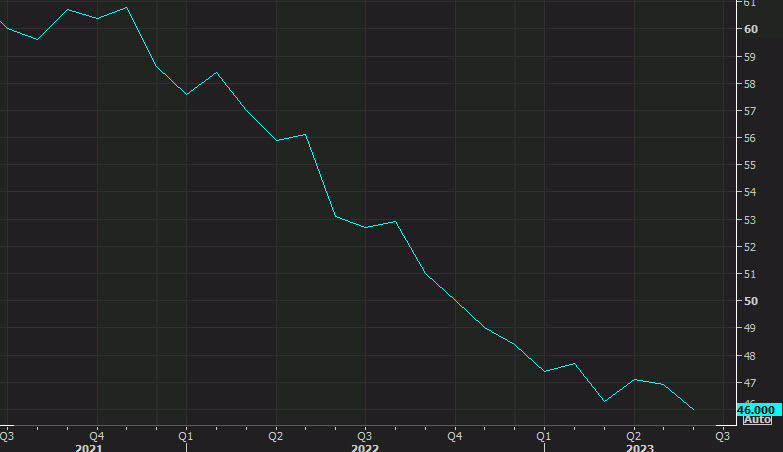The USD has been soft since early June, but the FED rhetoric in the last meeting after the 25 bps rate hike has changed the situation. Markets were be
The USD has been soft since early June, but the FED rhetoric in the last meeting after the 25 bps rate hike has changed the situation. Markets were betting on an end to the FED hiking cycle after this month’s hike, but on Wednesday they brought back the rhetoric of letting the data dictate the future of more hikes, possibly in September.
On Thursday we had a great round of data from the US, with the Q2 GDP coming at 2.4% against 1.8% expected, retail sales jumping higher and the unemployment claims falling lower, which shows a tightening labour market. As a result, the USD has been experiencing some decent bullish momentum in the last several trading days.
Although, today’s data wasn’t as great, but it wasn’t too bad either. ISM manufacturing PMI missed expectations, but it did show improvement and components are indicating a possible reversal from the lows.
ISM Manufacturing PMI for July 2023
ISM manufacturing PMI
- ISM Manufacturing PMI for July 46.4 points versus 46.8 expected
- ISM manufacturing for June was 46.0 points
- Prices paid 42.6 points vs 42.8 expected. Last month was 41.8 points
- Employment 44.4 points vs 48.0 expected. Last month 48.1 points
- New orders 47.3 points vs 45.6 prior
US manufacturing sector has been experiencing a recession, but we are seeing indications that the worst of the downturn might be over. You believe that there is a potential for positive growth (upside risk) in the manufacturing sector in 2024. One of the factors contributing to this optimistic outlook is the “new orders” component, which appears to be showing signs of improvement. As “new orders” is a forward-looking data point, it suggests that businesses are receiving more orders for their products, which could be an early indication of a potential recovery in the manufacturing industry.
New orders component
Jolts job openings also declined but the JOLTs data is older data (from June) and there is some concern that it may not be “true” to the real demand for workers. Nevertheless, looking at the chart above it is off the boil from 2022 levels, but still high historically (see chart above).
The JOLTs Job Openings for June 2023
Traders also tend to watch things like the quits rate for the strength of the jobs market. if the quits rate moves higher it is indicative of workers feeling confident about finding another job. Looking at the chart of the quits rate below, it has moved back lower and toward the level pre-pandemic. Although still high relative to historical levels, there are some signs that workers are not so anxious to quit their jobs (and get another easily).
QUITS rate moves lower
www.fxleaders.com
